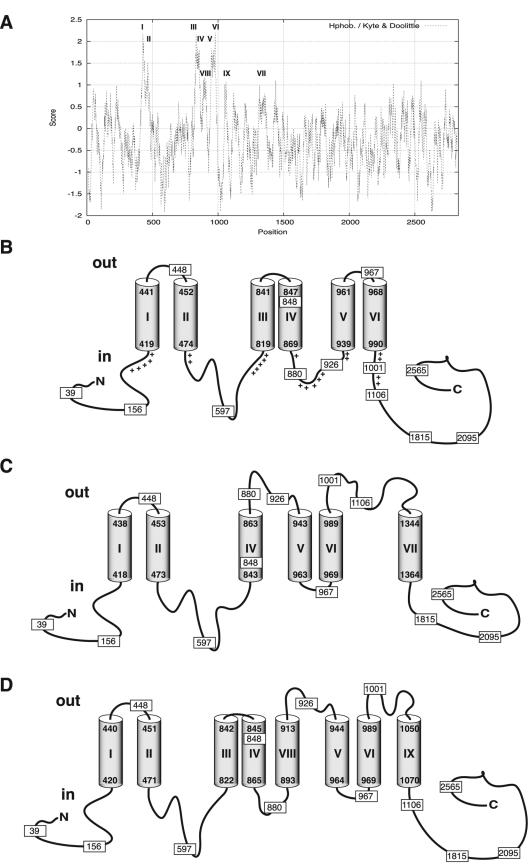FIG. 2.
Hydropathy analysis and membrane topology prediction for cyclic glucan synthase. Hydrophobicity profiles were generated by the method of Kyte and Doolittle (25) by using a sliding window of 21 residues (A). Alternative topology models were generated by using the programs SOSUI (36) and HMMTOP (41, 42) (B); TopPred II with the GES hydropathy scale (window size, 21 residues) (12) (C); and TopPred II with the KD hydropathy scale (window size, 21 residues) (12) and TMHMM (24) (D). I to IX correspond to the predicted TMSs of Cgs. Cylinders represent membrane-spanning segments. The positions of Cgs-AP and Cgs-βG fusions are indicated by rectangles, and the numbers indicate the numbers of Cgs amino acids fused to the reporter enzyme. The plus signs in panel B indicate positively charged residues in the vicinity of the TMSs.

